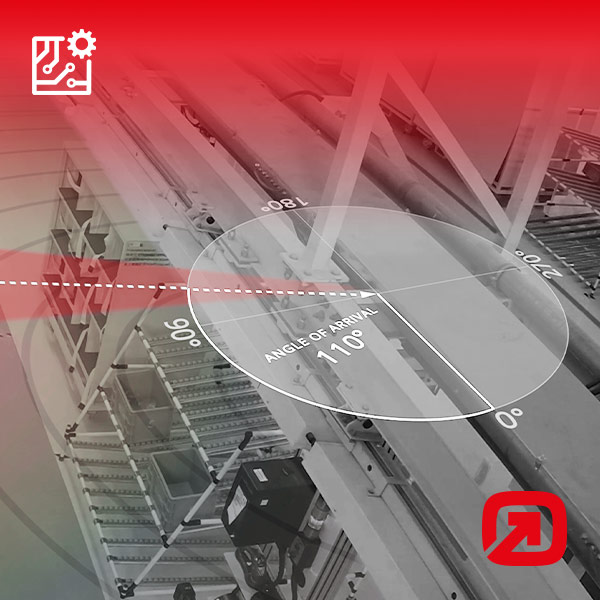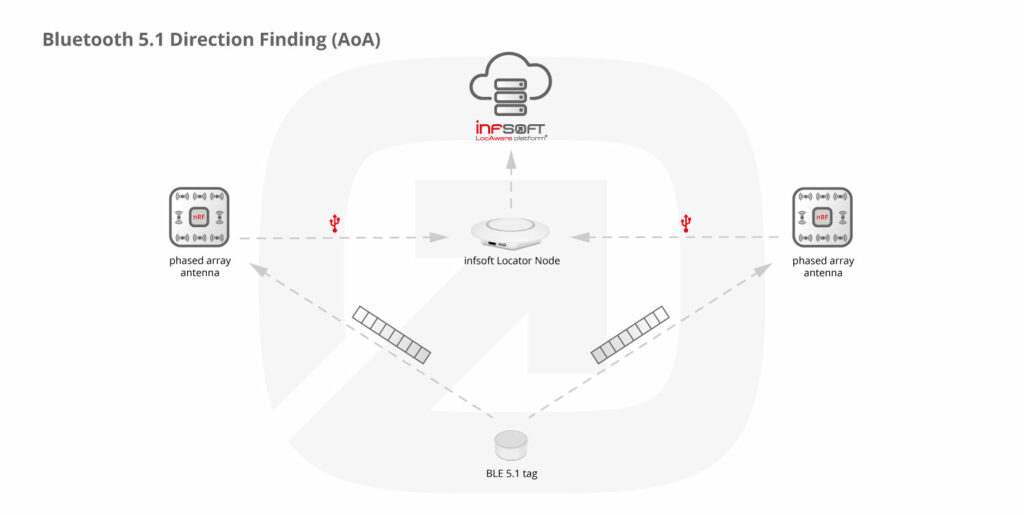Bluetooth 5.1 direction finding feature is a major development for indoor positioning. Direction finding enables determining the direction of an incoming signal using Angle of Arrival. In the following, we will give you an insight into how positioning with Bluetooth 5.1 using Angle of Arrival works, what positioning accuracy can be achieved and which application scenarios it’s most suitable for.
TECHNOLOGY
Direction finding enables positioning solutions to not only rely on received signal strength indicator (RSSI), but also the actual direction of a signal. This improves accuracy and opens new possibilities for applications in this segment.
infsoft uses a Nordic nRF52833 chip in combination with an in-house developed phased array antenna based on 8 antennas for Bluetooth 5.1 direction finding. The phased array antenna switches continuously between the 8 antennas when receiving a signal from a BLE 5.1 tag/beacon. The Nordic nRF52833 measures the phase shift of each of the 8 antennas. The measured data is sent to an infsoft Locator Node and then uploaded to the infsoft cloud which immediately calculates the received angle of the tag based on its phase shifts.
Using the calculated angle of at least two phased array antennas allows to create an intersection coordinate represented by X and Y values. These X and Y coordinates are later transferred to latitude and longitude due to the georeferenced locations of the phased array antennas.
APPLICATION SCENARIOS
This solution works well if used in an open space environment where there are no obstacles between the tag and the phased array antenna. In crowded areas, e.g. office environments or hospitals in which reflection of a signal has to be expected, the calculated angle of arrival and thus the position determination is getting more and more inaccurate.
Hence the technology is most suitable, for example, in industrial environments when a direct line-of-sight between transmitter and receiver is ensured. Assets can then be tracked in two- and three-dimensional space with sub-meter accuracy.
INFSOFT PHASED ARRAY ANTENNA
In order to guarantee precise and reliable indoor positioning using Bluetooth 5.1 and Angle of Arrival, we are developing a phased array antenna in-house. It is currently in the beta test phase and the estimated release is Q3/2020.
You can find more information on Bluetooth Low Energy and beacons on our website.
If you have any further questions, please reach out to us.








